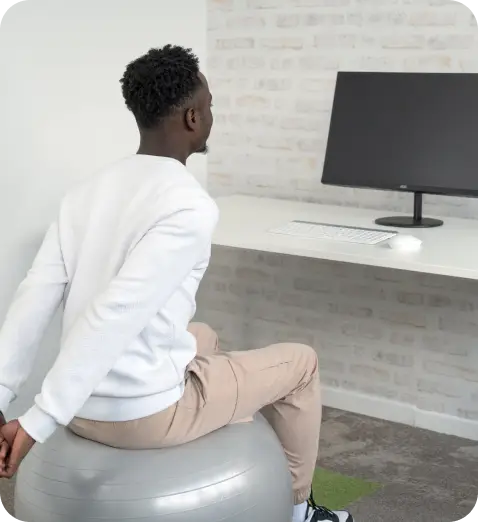- Boutique
- Nos solutions
- Actualités
- Nos clients
- À propos
- Contact
Nouveau client ?
Créer un compte
- Boutique
- Nos solutions
- Actualités
- Nos clients
- À propos
- Contact
Nouveau client ?
Créer un compte
Nouveau client ?
Créer un compte
Nouveau client ?
Créer un compte
Prenez connaissance de nos articles qui abordent une multitude de sujets, allant de la Qualité de Vie au Travail (QVT ou QVCT) à l’ergonomie, du télétravail à la lutte contre la sédentarité. Vous y découvrirez une abondance de conseils pratiques pour améliorer le confort au bureau, optimiser l’espace de travail à domicile, intégrer des pratiques ergonomiques efficaces, gérer le stress ou encore atteindre un meilleur équilibre entre vie professionnelle et personnelle.
Notre objectif est également de vous tenir informés des dernières tendances, avancées scientifiques et technologiques dans le domaine du bien-être au travail. En plus de ces aspects, nous accordons une importance particulière à la Responsabilité Sociétale des Entreprises (RSE) qui sera aussi abordée largement dans nos sujets.


Voici quelques-unes des thématiques que vous pourrez retrouver sur le blog Optimeo :
• Position assise et amélioration des conditions de travail : découvrez comment aménager l’espace pour une position assise optimale afin de réduire les risques professionnels liés au travail sur écran et la fatigue oculaire ;
• Équipements ergonomiques : apprenez à bien choisir des outils essentiels comme la souris ergonomique et le clavier externe pour favoriser une bonne ergonomie ;
• Compétences complémentaires et conseils en ergonomie : acquérez des compétences expertes et des conseils pratiques en matière d’ergonomie pour une meilleure ergonomie au bureau ou en télétravail.
Nous abordons aussi des sujets comme l’aménagement de postes et des espaces pour soutenir une posture neutre et un confort physique optimal. Découvrez par exemple comment un bureau ergonomique et des chaises de bureau spécifiques peuvent influencer votre bien-être quotidien et comment des conseils d’amélioration en apparence simples peuvent impacter positivement votre quotidien professionnel !
Optimeo
Mentions légales
Service client
+33 (0)6 95 11 37 68
+33 (0)3 72 47 09 38
Lundi au vendredi (9h à 18h)
Nos solutions
Optimeo
Mentions légales
Service client
Optimeo est en activité réduite pour congés jusqu'au 5 janvier 2026 ! Très belles fêtes de fin d'année à vous.
Pour toute demande de devis ou commande urgentes, contactez Chrystel TOUTAIN : chrystel.toutain@optimeo.com

sur le stock existant
(hors personnalisation)
Valable pour toute commande passée avant le 31/08
Pour acheter nos produits à l’unité, rendez-vous sur le site de notre partenaire distributeur Fiducial Office Solutions.